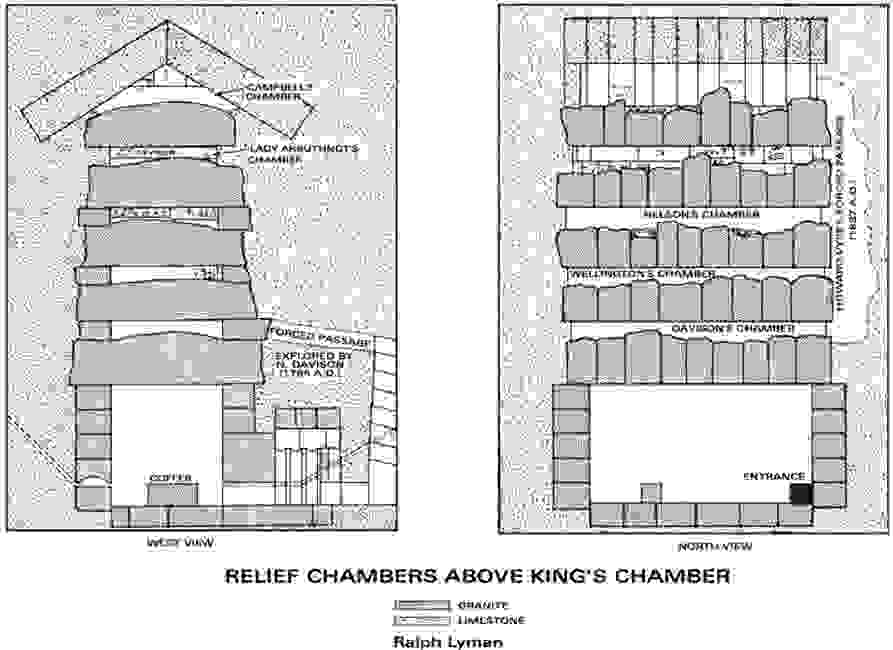Chapter 2
Legend and The Inventory Stele
There are two positions as to who it was that built the Great Pyramid and Sphinx―the Egyptians, or someone other. The author is of the second understanding that although the majority of pyramids in Egypt were built by Egyptians, the Great Pyramid, possibly the Second Pyramid on the Giza Plateau, and the Sphinx are exceptions. Egyptologists maintain without exception that all pyramids in Egypt and the Sphinx were of Egyptian construct. They support their conclusion, with respect to the three largest pyramids on the Giza Plateau, drawing in the main upon the following.
The Greek historian Herodotus (484-425 B.C.), from his collected history and legend of the Egyptian peoples of his time, related that Khufu, a IVth Dynasty pharaoh, had built the Great Pyramid, his son, Khafra, had built the Second Pyramid in the Giza complex, and that Menkaura, Khafra’s son, had built the Third. Herodotus further related that the Great Pyramid and its associated causeway were built over a thirty-year period, and that each side of this pyramid measured 440 royal cubits in length. He, although, made no mention as to who it was that had carved the Sphinx.
In A.D. 1837 Sir Howard Vyse announced his discovery of hieroglyphs in the Relief Chambers of the Great Pyramid. These hieroglyphs, which included Khufu’s cartouche, were painted in red ocher―a timeless ancient and equally contemporary iron rust pigment. The finding of this pharaoh’s cartouche, the location of which is referenced in the drawing, “Relief Chambers above King’s Chamber,” was thought by the Egyptological community to substantiate the Herodotus account, and considering the evidence available at that time their premise was quite reasonable.
Herodotus wrote that Khafra had built the Second Pyramid, and so the two temples connected by the Second Pyramid’s causeway were thought to be linked with that pharaoh. These structures have thereby come to be known as Khafra’s Mortuary Temple, and the Valley Temple of Khafra. In that the causeway to the Second Pyramid passes directly next to the Sphinx, Egyptologists tell us that the face of the Sphinx is a representation of the Pharaoh Khafra. They consequently assign the Sphinx to his monument production. Over fifty statues of Khafra were excavated from the Second Pyramid’s Valley Temple, which temple is situated adjacent to and southeast of the Sphinx. Presuming an association, and employing a bit of circular reasoning, these statues are said by Egyptologists to corroborate the Herodotus account that names Khafra as builder of the Second Pyramid.
Herodotus’s, however, is not the only early account that may be true. In the seventh century A.D. Al Makir wrote that Hermes built the Giza monuments. Seven hundred years later, in the 14th century, Ibn Batuta recorded that wherever he traveled throughout the Middle East the oldest traditions invariably associated Hermes Trismegistos, or Hermes the Thrice Great, with the Great Pyramid: “The pyramids of brick and stone were constructed by Hermes, the Thrice Great, who is the same as Enoch, and also called Esdris, Surid. In them he preserved the arts and sciences and other intelligences from before the Flood [the biblical Flood].” [1] Ibn Khurradhbih in his work, Marvels of Construction, as did the twelfth century Arab historian Abdul Latif (alternatively known as al-Baghdadi), circa 1162-1231 A.D., recorded that “In the books of the ancient Sabaeans, I have read that, of the two Giza pyramids one is the sepulchre of Hermes, the great prophet.” They further asserted that pilgrims visited these two pyramids from all countries of the earth. Such early chroniclers as Watwati, Sorar, and Al Dimisgi shared in this opinion. [2]

Copyright © 2018 God's Time Capsule - All Rights Reserved.